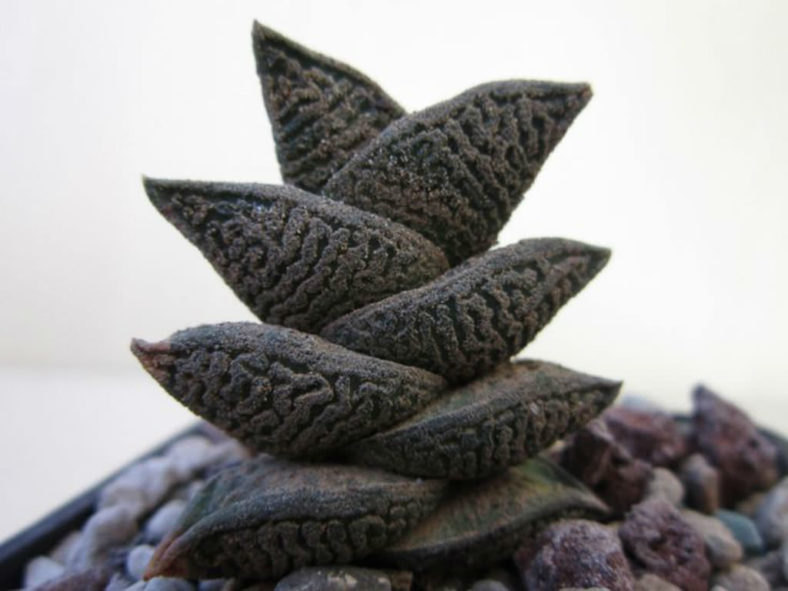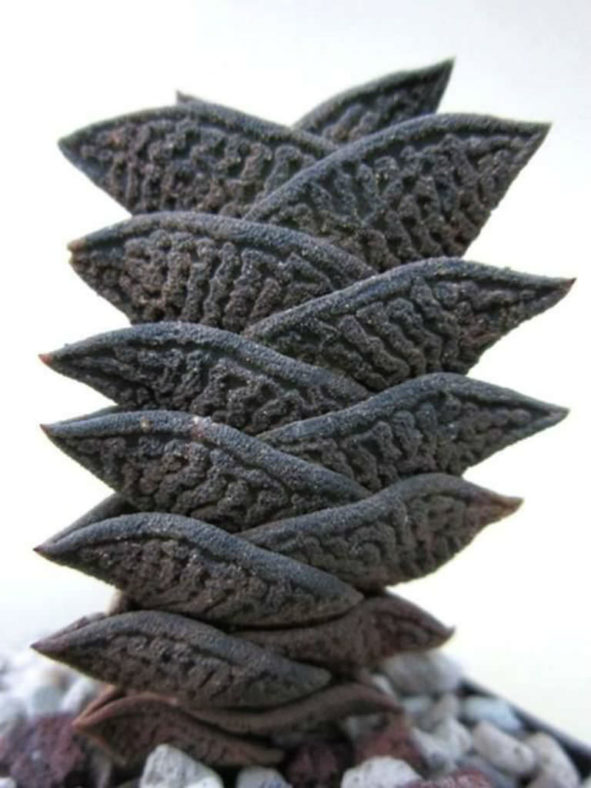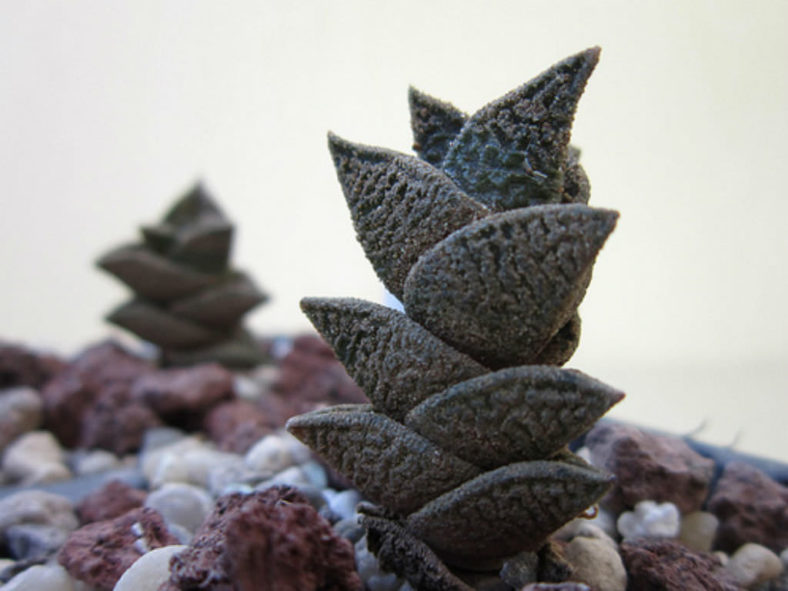Scientific Name
Haworthiopsis nigra var. diversifolia (Poelln.) G.D.Rowley
Synonym(s)
Haworthia diversifolia, Haworthia nigra f. nana, Haworthia nigra var. diversifolia, Haworthia schmidtiana f. nana, Haworthia schmidtiana var. diversifolia
Common Name(s)
Black Haworthia
Scientific Classification
Family: Asphodelaceae
Subfamily: Asphodeloideae
Tribe: Aloeae
Genus: Haworthiopsis
Etymology
The varietal epithet "diversifolia" (pronounced "dy-ver-sih-FOH-lee-uh") means "having different leaves. It probably refers to the differences in the leaves of this variety compared to the leaves of Haworthiopsis nigra var. nigra.
Origin
Haworthiopsis nigra var. diversifolia is native to South Africa. It grows under the bushes or amongst stones from Leeu Gamka to Beaufort West in the Western Cape province.
Description
Haworthiopsis nigra var. diversifolia, formerly known as Haworthia nigra var. diversifolia, is a small succulent with dark grayish-green, leathery leaves that are tightly arranged on the stem. It slowly grows, solitary or in small clumps, and can reach a height of 2 inches (5 cm). Compared to the typical variety, the tubercles in this variety are flattened, often confluent in transverse bands, and tend to be greyish. At the same time, the leaves are shorter and more closely adherent. Because the leaves are short and only slightly recurved at the tips, their arrangement in three vertical tiers is very obvious.
In late spring or summer, mature rosettes produce simple, lax stalks with small white flowers.

How to Grow and Care for Haworthiopsis nigra var. diversifolia
Hardiness: USDA hardiness zone 10a to 11b: from 30°F (-1.1°C) to 50°F (10°C).
These succulents are not considered difficult to grow as houseplants. If you can keep a pot of Aloe alive on a windowsill, chances are you can do the same with a dish of Haworthia. As with all succulents, the most common issue is overwatering. They should never be allowed to sit in water under any circumstances. At the same time, these little decorative plants can be grown in interesting containers such as teacups and even miniature baby shoes. If you're given a Haworthia in such a container, ensure the container has adequate drainage.
Haworthias are small, typically ranging from 3 to 5 inches (7.5 cm to 12.5 cm) in height, and are relatively slow-growing. Therefore, they are often grown in small clusters in wide, shallow containers. Over time, clusters will naturally enlarge as the mother plant sends off small plantlets. When the cluster has outgrown its container, repot into a new wide and shallow dish with fresh potting soil in the spring or early summer. This is also the time to take offsets for propagation.
See more at How to Grow and Care for Haworthia.
Links
- Back to genus Haworthiopsis
- Succupedia: Browse succulents by Scientific Name, Common Name, Genus, Family, USDA Hardiness Zone, Origin, or cacti by Genus
Photo Gallery
Click on a photo to see a larger version.

